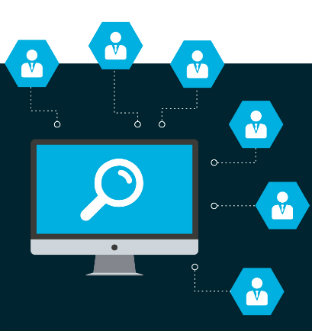Switching Marketing Automation Platforms can be an exciting time. The endless possibilities, the yearning to get away from all the pain that your current platform has been causing you. You’re like a kid on Christmas day – just can’t wait to unwrap the box and get your hands on that shiny new toy.
Sometimes it makes sense to switch platforms. Maybe you’ve outgrown your current MAP because it can no longer support the more advanced campaigns you want to implement, or maybe your database is now so large and full of activity that your old platform can’t handle all that data. These are all valid reasons to switch, but it’s important to truly assess the situation before even preparing to embark on a project that can have a major impact on your business.
The following questions and their answers may not be mutually exclusive, but it is crucial that you are able to answer them fully as an organization before looking into migrating to a new platform. It is also important to get buy in and alignment from all teams that will be impacted by the switch, because only then will you get the whole picture and be able to answer the questions in a way that ensures it will benefit your organization.
Question 1: Why am I looking for a new Marketing Automation Platform?
There are typically two scenarios that trigger the search for a new platform:
- It could be an emotional decision. You’re the power user/admin/marketing automation wizard of your organization who has to deal with this platform on a day to day basis. You reap the glory when it functions as expected but feel the pain when the platform falls short of expectations or doesn’t function as expected, costing your organization monetary and human resources. Or you could be a part of a larger team in charge of the platform and are painfully aware of its shortcomings due to the negative feedback you receive on what seems to be a daily basis.
- It could be an objective business decision. Your current platform doesn’t support all the things your marketing team wants to do. You want to implement the latest and greatest marketing strategies and technologies, and the only thing stopping you is this clunky old platform of yours. You can only dream of being able to implement things like ABM, predictive analytics, or even deep personalization. All your marketing friends can do it, and you’re getting a serious case of FOMO.
When our clients approach us with scenario one, we recommend holding discovery workshops, where we identify all the pain points that the stakeholders are feeling – often producing similar feedback to scenario two. After we’ve confirmed the pain points, we can then determine if there is a solution within your current platform that will alleviate current issues as well as any future ones that are likely to arise, or whether migrating to a different MAP is the only answer.
We approach scenario two much like we approach the first; we identify all the areas where you feel your current platform is lacking, and review all the bells and whistles that you’re looking for. Then we start asking the hard questions: do you have a plan or roadmap in place to implement these new features in an efficient and effective manner, are you at a point on the marketing automation maturity curve where you’re ready to take on these new tactics, and most importantly does it make sense for you to do these things based on your target audience? Essentially, this is our first test of whether you really need to move at all.
Question 2: What do I want to get out of this new platform?
The answer to this question is probably closely linked to your responses to question 1. You want all the features that you’ve heard about and don’t currently have, and none of the headaches that you have with your current platform.
Features such as AI and predictive analytics sound great and are indeed very effective when paired with the right use cases and executed correctly. However, these features will not determine whether your marketing automation efforts are successful. They are the cherry on top of your already successful processes and strategies, and again, you have to ask yourself, is my current platform being used to its full potential? If you are unsure, 9 times out of 10 it would be cheaper to get some help in finding out how to get the most out of it, rather than embarking on the expensive and time-consuming journey of migration.
Question 3: What do I like about my existing platform?
This may seem a very basic question, but your answer will help determine some of the key criteria for your new platform, as well as act as an additional reality check. Migrating your MAP ensures you gain new functionalities, but you may also lose some that are particular to your old platform, and it’s important to ensure they are not business critical.
Question 4: What are my business-critical processes?
Answering this question in as much detail as you can, will help save you lots of headaches down the road. What are the processes, workflows, and functionalities that are critical to your business? These must be supported as well if not better in the new MAP as they are in your current platform. Not only that, but they must also continue to exist and function as you are migrating from one platform to the next, so you need to be wary of the cut-over planning and costs surrounding these aspects of your platform.
Question 5: Which platform is best suited to my needs?
In your search for a new marketing automation home, it’s important to bear in mind that you need a MAP that suits your business needs, rather than one that will require you to adapt them to fit its functionalities. Start with your business-critical processes, while keeping your roadmap items in mind, not the other way around, and then make a list of all the vendors you’re interested in, keeping the following key criteria in mind when you’re evaluating them:
- Data structure: What does your current data structure look like? Do your processes rely on certain types of relationship between different tables and objects? How many levels deep should these relationships go? For example, do you currently have a one to many relationship for your customers’ purchase history, but also have a many to many relationship between the purchase history and a catalog of products/services to help personalized the content that is delivered to your contacts? Does the new platform you’re looking at support your required data structure, and do they solve any pain points that you have with your existing one? It always helps to give detailed examples of use cases and ask the vendors to build a demo tailored to your use cases. Drill down as much as possible and ask those burning questions, because most of the times in the demos you’ll get a surface look at how the platform will function, only to find out later that it does not actually support the more complex requirements of your use case without heavy customization – or even at all.
- Integration: Open and robust APIs enable most platforms to integrate with almost any other related platform. However, it is always better to have an ‘out of the box’, supported integration, rather than having to build your own custom integration, especially if you’re going to have to use a middleware like APIGEE to integrate your platforms. Native integration between your new platform and your existing integrated platforms will always be the preferred choice. And remember to ask to take a look ‘under the hood’ as well via a detailed demo – you need to see exactly what kind of integration your new platform will support. Will it integrate with all the desired objects/tables? Will it perform the integration functions you currently have and will want to have? Having your tech stack integrate efficiently is a key part of your marketing automation success.
- Sweat the small stuff: We sometimes take things for granted, for example useful features such as transactional emails and email scheduling. Chances are you’ve forgotten about these little details while evaluating the big stuff in your potential new platform. The easiest way to test this all in one go is to take one of your most critical and/or most complex campaigns and ask for a demo of how it would run on your new platform. Make note of all the functions the campaign currently uses, and go through that list during the demo to make sure that all these functions will behave as expected.
Migrating your Marketing Automation Platform is a huge task, especially as you’ve got to ‘keep the engine running’ while doing so. If you’re reading this article, you may have already decided it’s what your business needs to do, but if you’re still having doubts, or need support at any point in the process, we would be delighted to help. We’ve supported our clients on a large number of migrations and are familiar with both the range of platforms and the pitfalls you can encounter.


